-
 Bitcoin
Bitcoin $83,379.8262
-0.22% -
 Ethereum
Ethereum $1,808.9744
-0.10% -
 Tether USDt
Tether USDt $0.9996
-0.01% -
 XRP
XRP $2.1277
-0.23% -
 BNB
BNB $592.2559
-0.39% -
 Solana
Solana $120.3337
-0.47% -
 USDC
USDC $1.0000
0.00% -
 Dogecoin
Dogecoin $0.1673
-1.02% -
 Cardano
Cardano $0.6451
-1.84% -
 TRON
TRON $0.2363
-0.26% -
 UNUS SED LEO
UNUS SED LEO $9.1458
-0.83% -
 Chainlink
Chainlink $12.7793
-0.56% -
 Toncoin
Toncoin $3.2673
-1.55% -
 Stellar
Stellar $0.2520
-2.16% -
 Shiba Inu
Shiba Inu $0.0...01225
-0.61% -
 Avalanche
Avalanche $17.3800
-4.22% -
 Sui
Sui $2.1777
-2.42% -
 Hedera
Hedera $0.1598
-1.89% -
 Litecoin
Litecoin $82.2500
-2.13% -
 Polkadot
Polkadot $3.9448
-1.53% -
 MANTRA
MANTRA $6.2479
-0.74% -
 Bitcoin Cash
Bitcoin Cash $296.5992
-1.37% -
 Dai
Dai $1.0000
0.00% -
 Bitget Token
Bitget Token $4.4594
-1.24% -
 Ethena USDe
Ethena USDe $0.9991
0.00% -
 Pi
Pi $0.6491
40.21% -
 Monero
Monero $214.4034
-1.57% -
 Hyperliquid
Hyperliquid $11.7671
0.04% -
 Uniswap
Uniswap $5.8336
-0.74% -
 OKB
OKB $54.1767
5.56%
Guide to cryptocurrency K-line chart trading strategies
K-line charts show price movements in crypto, with candlesticks indicating open, close, high, and low prices over time, aiding in trend analysis and trading strategies.
Mar 30, 2025 at 05:00 pm
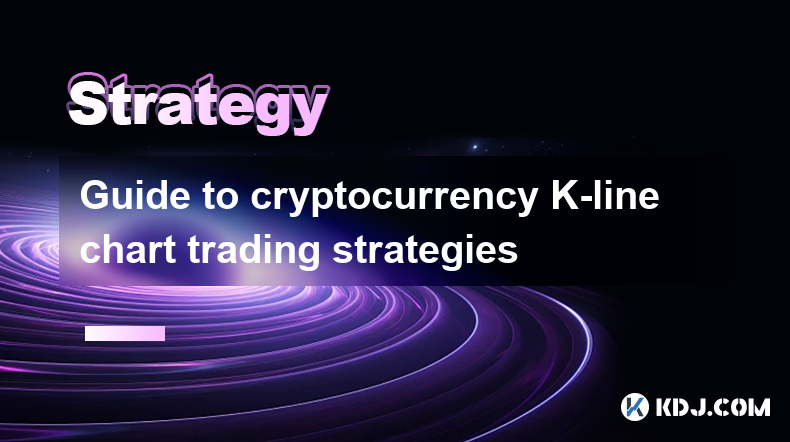
Understanding Cryptocurrency K-Line Charts
Cryptocurrency K-line charts, also known as candlestick charts, are visual representations of price movements over a specific period. Each candlestick represents a time interval (e.g., 1 minute, 1 hour, 1 day), showing the opening, closing, high, and low prices. Understanding these elements is crucial for effective trading. The body of the candlestick indicates the price range between the open and close, while the wicks (shadows) show the high and low prices reached during that period. Analyzing these elements helps traders identify potential trends and trading opportunities.
Identifying Candlestick Patterns
Numerous candlestick patterns exist, each suggesting a potential price movement. Recognizing these patterns is key to formulating effective trading strategies. Some common bullish patterns include the hammer, morning star, and engulfing patterns, suggesting a potential price increase. Bearish patterns, such as the hanging man, evening star, and dark cloud cover, conversely, hint at potential price declines. However, it's crucial to remember that these are just indicators, not guarantees.
Using Indicators with K-Line Charts
While candlestick patterns provide valuable insights, combining them with technical indicators enhances trading accuracy. Moving averages (MA), such as the simple moving average (SMA) and exponential moving average (EMA), smooth out price fluctuations and identify trends. Relative Strength Index (RSI) measures the momentum of price changes, indicating overbought or oversold conditions. MACD (Moving Average Convergence Divergence) identifies changes in momentum by comparing two moving averages. These indicators, when used in conjunction with candlestick patterns, offer a more comprehensive view of market dynamics.
Common Cryptocurrency K-Line Chart Trading Strategies
Several trading strategies utilize K-line charts and technical indicators. Here are a few examples:
Trend Following: This strategy involves identifying an established trend (uptrend or downtrend) and trading in the direction of that trend. Indicators like moving averages can help identify the trend, while candlestick patterns confirm entry and exit points.
Mean Reversion: This strategy focuses on identifying assets that have deviated significantly from their average price. The trader anticipates a return to the average, entering a trade accordingly. RSI and Bollinger Bands are commonly used indicators for this strategy.
Scalping: This involves making numerous short-term trades, aiming for small profits on each transaction. Scalpers closely monitor price fluctuations and use candlestick patterns and indicators to identify quick entry and exit points. This strategy requires high attention and fast execution.
Swing Trading: This strategy involves holding positions for a few days or weeks, aiming for larger price swings. Swing traders utilize candlestick patterns, indicators, and chart analysis to identify potential entry and exit points. They are less concerned with short-term price fluctuations.
Step-by-Step Guide to a Simple K-Line Trading Strategy
Let's outline a simple strategy using a moving average crossover:
Step 1: Choose a timeframe: Select a timeframe (e.g., 4-hour chart) based on your trading style.
Step 2: Select moving averages: Choose two moving averages, such as a 50-period SMA and a 200-period SMA.
Step 3: Identify a bullish crossover: Buy when the shorter-term MA (50-period) crosses above the longer-term MA (200-period).
Step 4: Identify a bearish crossover: Sell when the shorter-term MA crosses below the longer-term MA.
Step 5: Set stop-loss and take-profit orders: Protect your capital and secure profits by setting appropriate stop-loss and take-profit orders. These orders automatically execute trades when the price reaches predetermined levels.
Risk Management in Cryptocurrency K-Line Chart Trading
Risk management is paramount in cryptocurrency trading. Never invest more than you can afford to lose. Diversify your portfolio across multiple assets to mitigate risk. Use stop-loss orders to limit potential losses on individual trades. Thoroughly research any cryptocurrency before investing. Stay updated on market news and events that could impact your investments.
Advanced K-Line Chart Techniques
Advanced techniques involve incorporating volume analysis, Fibonacci retracements, and support/resistance levels. Volume analysis helps confirm price movements, while Fibonacci retracements identify potential price reversal points. Support and resistance levels represent price areas where buying or selling pressure is strong. Mastering these techniques requires significant experience and practice.
Frequently Asked Questions
Q: What are the best indicators for K-line chart analysis?
A: There's no single "best" indicator. The effectiveness of an indicator depends on the trading strategy and market conditions. Popular choices include moving averages (SMA, EMA), RSI, MACD, Bollinger Bands, and volume indicators.
Q: How do I interpret candlestick patterns?
A: Each candlestick pattern has a specific meaning based on its body and wicks. Learn to identify common bullish and bearish patterns and their implications for price movements. Consider combining pattern recognition with other indicators for better accuracy.
Q: What is the difference between a bullish and a bearish candlestick?
A: A bullish candlestick has a longer body and a shorter lower wick (or no lower wick), indicating that the closing price was higher than the opening price. A bearish candlestick has a longer body and a shorter upper wick (or no upper wick), showing that the closing price was lower than the opening price.
Q: Can I use K-line charts for all cryptocurrencies?
A: Yes, K-line charts can be applied to any cryptocurrency. However, the effectiveness of a trading strategy may vary depending on the specific cryptocurrency's volatility and market dynamics.
Q: Where can I find K-line charts for cryptocurrencies?
A: Many cryptocurrency exchanges and trading platforms offer K-line charts. Popular options include Binance, Coinbase, Kraken, and others. Many charting software applications also provide access to cryptocurrency K-line data.
Q: How do I choose the right timeframe for my K-line chart?
A: The ideal timeframe depends on your trading style. Short-term traders may prefer 1-minute or 5-minute charts, while long-term traders might use daily or weekly charts. Experiment with different timeframes to find what works best for you.
Q: Is it possible to lose money using K-line chart analysis?
A: Yes, no trading strategy guarantees profits. Market conditions can change rapidly, and even the most sophisticated analysis can be wrong. Proper risk management is crucial to minimize potential losses.
Disclaimer:info@kdj.com
The information provided is not trading advice. kdj.com does not assume any responsibility for any investments made based on the information provided in this article. Cryptocurrencies are highly volatile and it is highly recommended that you invest with caution after thorough research!
If you believe that the content used on this website infringes your copyright, please contact us immediately (info@kdj.com) and we will delete it promptly.
- I'm going to be honest with you, I had a version of this article virtually written with Duke being in the National Championship
- 2025-04-06 14:30:12
- Bitcoin Resists as Wall Street Loses $3.25T in One Day
- 2025-04-06 14:30:12
- Despite the obvious signs of the speculative market for these particular cryptos cooling off, experienced traders continue to be interested in memecoins
- 2025-04-06 14:25:12
- Bitcoin developers are developing a substantial update to shield cryptocurrency from quantum computing cybersecurity threats.
- 2025-04-06 14:25:12
- Circle Internet Financial, the issuer of the frequently used StableCoinet USD Coin (USDC), prepares for IPO through a IPO (IPO).
- 2025-04-06 14:20:12
- Brazilians Invest More in Cryptocurrency Than in the Stock Market
- 2025-04-06 14:20:12
Related knowledge
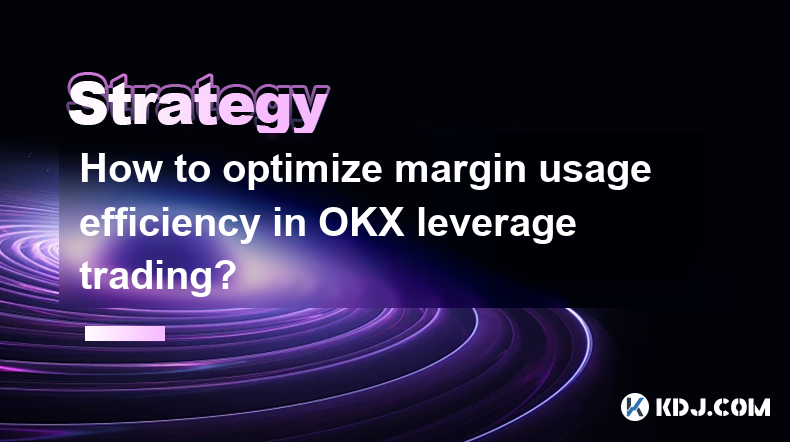
How to optimize margin usage efficiency in OKX leverage trading?
Apr 04,2025 at 03:21pm
Margin usage efficiency is a critical aspect of leverage trading on platforms like OKX, where traders aim to maximize their returns while managing risk. Understanding how to optimize margin usage can significantly enhance your trading performance. This article will delve into various strategies and techniques to help you make the most out of your margin...
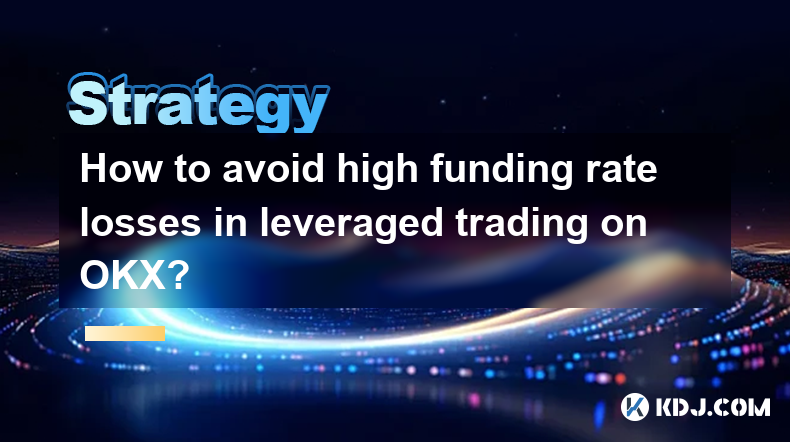
How to avoid high funding rate losses in leveraged trading on OKX?
Apr 04,2025 at 05:28pm
Understanding Funding Rates in Leveraged Trading on OKXFunding rates are a critical component of leveraged trading on platforms like OKX. They represent the periodic payments made between traders to maintain the balance between the futures price and the spot price of the underlying asset. When trading with leverage, understanding and managing funding ra...
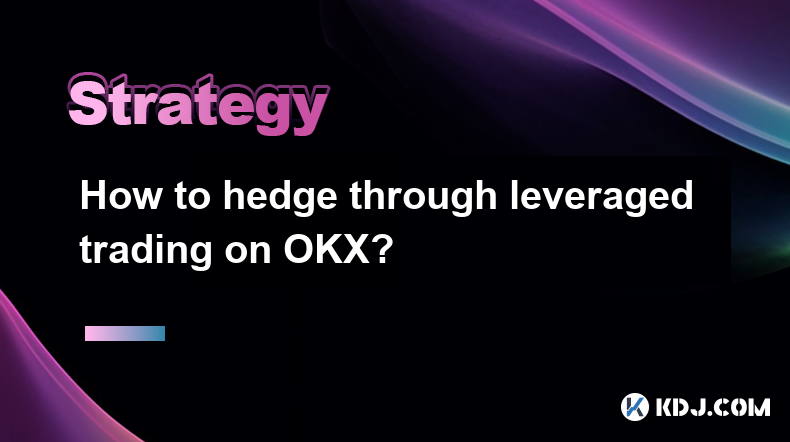
How to hedge through leveraged trading on OKX?
Apr 04,2025 at 01:42pm
Hedging through leveraged trading on OKX can be an effective strategy for managing risk in the volatile cryptocurrency market. This article will guide you through the process of setting up and executing a hedging strategy using OKX's leveraged trading features. We will cover the basics of leveraged trading, how to set up a hedge, and the steps to execut...
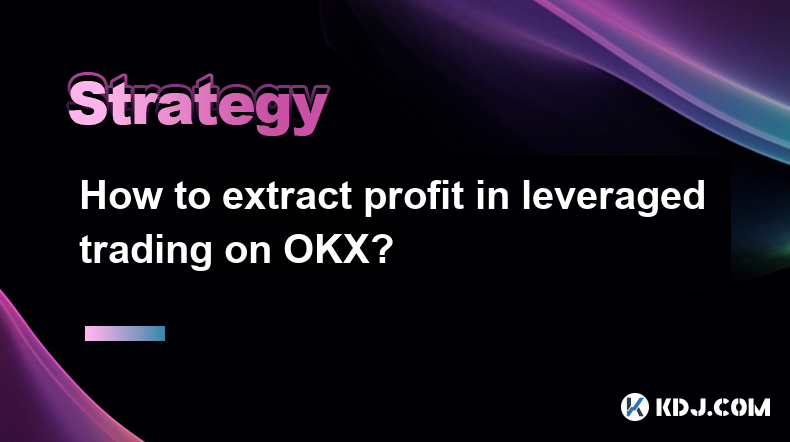
How to extract profit in leveraged trading on OKX?
Apr 04,2025 at 05:42am
Leveraged trading on OKX can be a powerful tool for traders looking to amplify their potential profits. However, it also comes with increased risk, making it essential to understand how to effectively extract profit from these trades. This article will guide you through the process of leveraging OKX's platform to maximize your gains while managing the i...
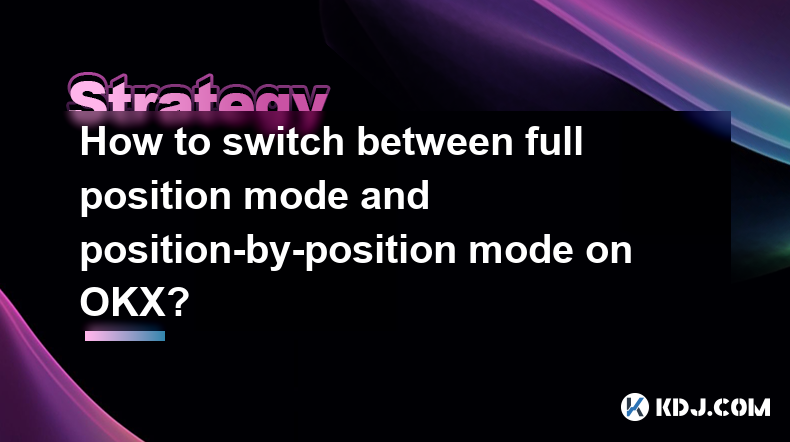
How to switch between full position mode and position-by-position mode on OKX?
Apr 06,2025 at 11:50am
Switching between full position mode and position-by-position mode on OKX can be crucial for managing your trading strategy effectively. Understanding the differences between these modes and knowing how to switch them is essential for any trader. In this article, we will guide you through the process step-by-step, ensuring you can easily navigate these ...
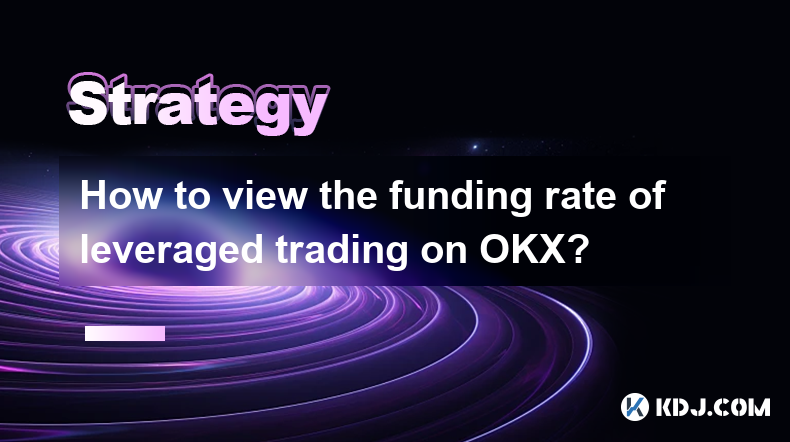
How to view the funding rate of leveraged trading on OKX?
Apr 04,2025 at 07:07am
Understanding the funding rate is crucial for anyone involved in leveraged trading on OKX. The funding rate is a mechanism used in perpetual futures contracts to ensure that the market price of the futures remains closely aligned with the spot price of the underlying asset. This article will guide you through the process of viewing the funding rate on O...

How to optimize margin usage efficiency in OKX leverage trading?
Apr 04,2025 at 03:21pm
Margin usage efficiency is a critical aspect of leverage trading on platforms like OKX, where traders aim to maximize their returns while managing risk. Understanding how to optimize margin usage can significantly enhance your trading performance. This article will delve into various strategies and techniques to help you make the most out of your margin...

How to avoid high funding rate losses in leveraged trading on OKX?
Apr 04,2025 at 05:28pm
Understanding Funding Rates in Leveraged Trading on OKXFunding rates are a critical component of leveraged trading on platforms like OKX. They represent the periodic payments made between traders to maintain the balance between the futures price and the spot price of the underlying asset. When trading with leverage, understanding and managing funding ra...

How to hedge through leveraged trading on OKX?
Apr 04,2025 at 01:42pm
Hedging through leveraged trading on OKX can be an effective strategy for managing risk in the volatile cryptocurrency market. This article will guide you through the process of setting up and executing a hedging strategy using OKX's leveraged trading features. We will cover the basics of leveraged trading, how to set up a hedge, and the steps to execut...

How to extract profit in leveraged trading on OKX?
Apr 04,2025 at 05:42am
Leveraged trading on OKX can be a powerful tool for traders looking to amplify their potential profits. However, it also comes with increased risk, making it essential to understand how to effectively extract profit from these trades. This article will guide you through the process of leveraging OKX's platform to maximize your gains while managing the i...

How to switch between full position mode and position-by-position mode on OKX?
Apr 06,2025 at 11:50am
Switching between full position mode and position-by-position mode on OKX can be crucial for managing your trading strategy effectively. Understanding the differences between these modes and knowing how to switch them is essential for any trader. In this article, we will guide you through the process step-by-step, ensuring you can easily navigate these ...

How to view the funding rate of leveraged trading on OKX?
Apr 04,2025 at 07:07am
Understanding the funding rate is crucial for anyone involved in leveraged trading on OKX. The funding rate is a mechanism used in perpetual futures contracts to ensure that the market price of the futures remains closely aligned with the spot price of the underlying asset. This article will guide you through the process of viewing the funding rate on O...
See all articles




















































































